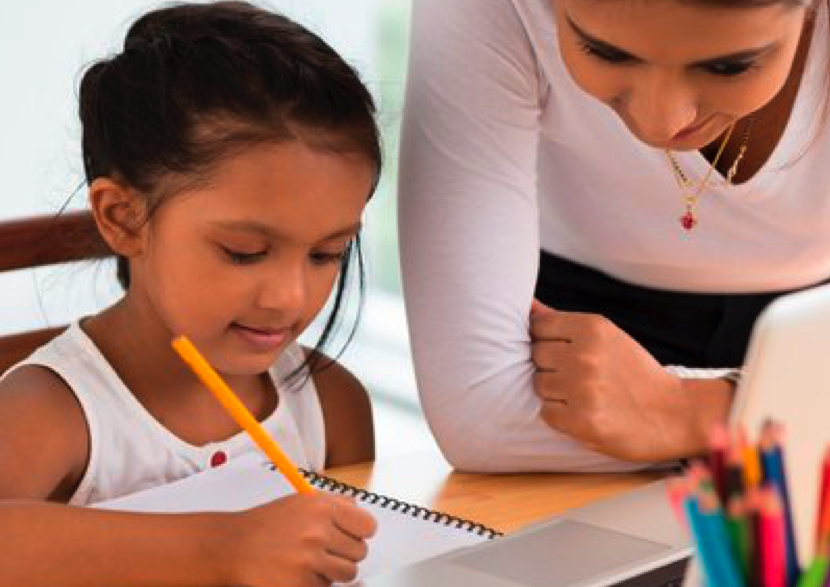This year back to school is going to be a bit different! So, let’s embrace it and be prepared to handle whatever comes our way. We already know some of what is to come when school starts because many of us saw our children struggle through last spring’s “online learning”. As the old adage says, “When life gives you lemons, make lemonade”. So, let’s drink up!
LISTEN DEEPLY- SHOW AND TELL COMMUNICATION
Many children are going to communicate their “displeasure” with the current circumstances through their actions and behaviors. As parents, we need to put on our detective hats and try to decode the messages they are trying to communicate. Most children don’t have the skills to recognize what they are needing/ missing or identify how that makes them feel. We need to help uncover what is below the surface driving their behavior before we decide how to respond. Once we have helped them identify what they need or how they are feeling we can help them to problem-solve or offer some choices.
THIS IS HARD STUFF
Let’s keep in mind how hard this situation actually is for our kiddos. Our children are struggling because of the uncertainty and chaos in their lives. Kids in general don’t feel like they have a ton of control or power. Now many kids feel more out of control than ever, because some of the basic structure and areas where they did have control do not currently exist. They are also struggling because they don’t have outlets to release their physical energy like they once had on the playground or sports fields with friends and teams. They are not able to engage and connect socially with other kids and adults the same way they had six months ago.
WHAT TO BE ON THE LOOKOUT FOR
It is realistic to anticipate that you will see behavior changes in your children. It can be helpful to know what to look for that might indicate your child is dealing with stress and anxiety. Both anxiety and stress can look different in different children and at different ages. Changes like excessive worrying, sadness, crying or irritability can be a clear sign that your child is struggling and needs support. In other children changes in sleeping habits, unhealthy eating, or having difficulty concentrating might be an indicator that your child needs some support and intervention.
THREE STRATEGIES TO EASE IN
TO SCHOOL ONLINE
CREATE STRUCTURE THROUGH ROUTINE
Children thrive knowing what is to come and having a clear understanding of what is expected of them. Even though kids are not running out the door to get to school on time you can still use a routine or responsibility chart to create some structure for them. A routine/responsibility chart can create more clarity and consistency, which can help make the day go more smoothly, especially when your kids would rather be doing other things. Researchers believe that the brains in both humans and animals evolved to feel calmed by repetitive behavior and that our daily rituals and habits are a primary way to manage stress. This is especially true in unpredictable environments or situations where we feel pressured, a lack of control, or threatened in some way. To get some tips in guidance on creating a routine chart with your child check out Is It Time For Your Family to Hit The Charts?
MODEL EMOTIONAL REGULATION & SELF-CARE
The way you behave and manage stress is going to influence how your child manages difficulties as well. Modeling self-care and emotional regulation are one of the most powerful ways to influence your child’s behaviors and actions. If you are unable to express your emotions and instead fly off the handle you can bet, you will see this tendency from your child as well. If self-care isn’t part of your daily or weekly routine you won’t only be able to respond to your child in a calm, patient, and rational manner, but you will be communicating to your child that caring for oneself is not valuable.
CREATE RITUALS OF CONNECTION
Connection is often the key to helping children manage some of their challenges. In general, kids are thirsty for connection. Children want to feel connected to you ALL of the time and when there is connection it creates feelings of safety and security. Creating rituals of connection can help to avoid big emotions or challenges because there are predictability and reliability. (Ex-Connecting with some special time in the morning before kids start school and you head to the room next door to get some work done. This can also take place at the end of the day, (a story on your lap before dinner gets started, a "good night, lights off" ritual, etc.) These will provide consistent opportunities for connection, so your child does not constantly feel like they are searching for or missing the connection.





